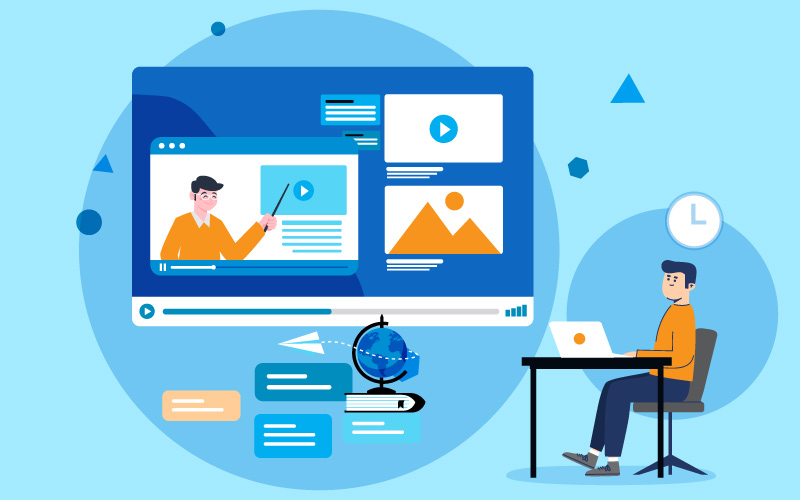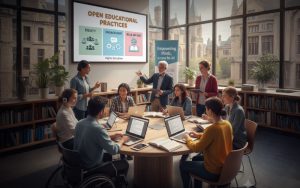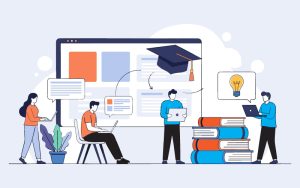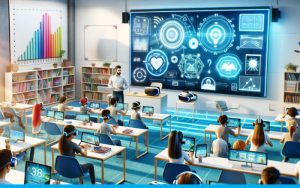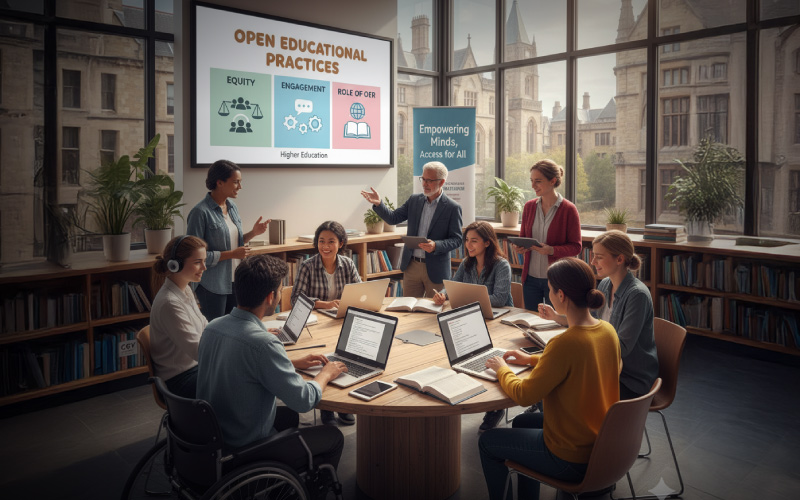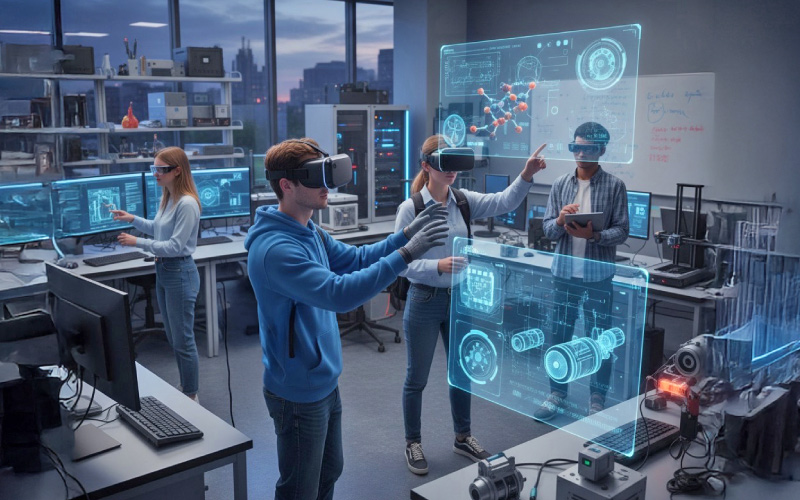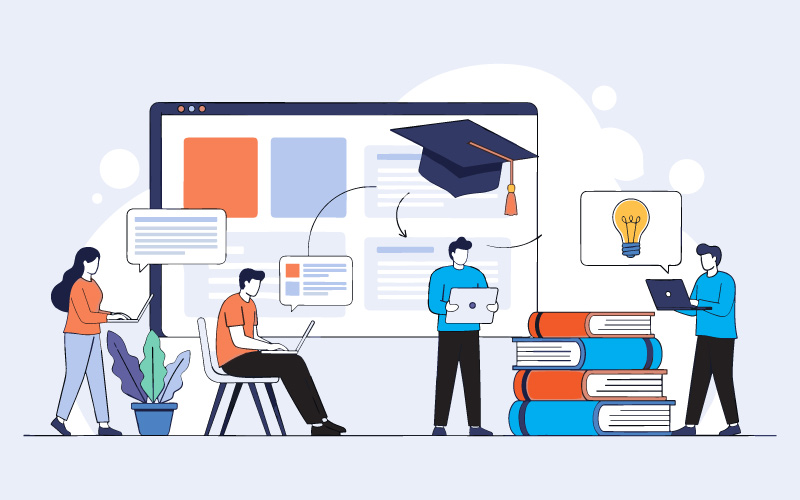It’s been coming for years, but 2025 finally tipped the scale. Online learning isn’t the “alternative” anymore- it’s how higher education operates today. Lecture halls still exist, sure, but the real action’s happening on screens- where learners can pause, engage and lean at their own pace.
This shift didn’t happen overnight. Learners wanted more control over how, when and where they learn. They were booking for more flexibility that fits the schedule- not the other way around. Some are studying from dorms, some from cafés, and a few from different time zones altogether. The point is, they’re still in class.
Universities noticed this change and adapted quickly. But now the question isn’t if digital learning works anymore- it’s how far it can go.
And that story starts with the numbers.
Behind the Numbers: Tracking the 2025 Surge
Anyone who is a part of higher education has noticed the transformation of digital learning taking center stage. What used to feel like a backup kup option has turned into the prime focus.
As per the National Student Clearinghouse Research Center, college enrollment finally surpassed past pre-pandemic numbers. So, now approximately 45% undergraduates are taking at least one online class which is 10% higher than 2020.
Add to that 2.3 million undergraduates have shifted to fully or partially online programs since pre-COVID, and the picture’s pretty clear: online isn’t a phase- it’s the baseline. Even certificate and credential programs are joining, showing an additional 10% growth this year.
All that momentum brings us to the question- what flipped the switch and why now?
The Forces Driving the Tipping Point
Online learning suddenly is a mix of technology, mindset, and culture combined in one.
Tech finally works: AI tutors, interactive platforms, and hybrid setups are no longer experimental. One can pause, review, and get instant feedback without awkward hand-raising. This transformation proves to be a seamless blend of sophistication and practicality supported by technology.
Student mindset shift: Flexibility is the baseline here. This was students and not chained to the lecture hall and tight schedules.
Universities catching up: Campuses still exist, but the core learning is online-first. Hybrid programs aren’t leftovers; they’re VIP passes. Professors are designing experiences, not just reading slides.
Put it all together, and 2025 feels different. Students want flexibility, tech actually works, and universities are finally paying attention. But knowing why it’s happening only tells half the story.
The real insight comes from stepping inside these classrooms – seeing how courses are structured, how students actually engage, and why this model keeps pulling them back. That’s where the shift stops being abstract and starts feeling real.
Inside the New Learning Experience: How Online Has Evolved
Digital learning in 2025 has changed a lot since the pandemic – era Zoom class. It’s more immersive, personalized, and actually keeps them engaged. Platforms track progress, nudge them when they stumble upon a difficulty, and suggest what to handle next – ditching those one-size-fits-all lectures.res.
Here is where digital smarts meet real-world practice. Students do not just watch simulations – they run projects, testing solutions, and applying skills in real contexts. They teach through virtual labs, collaborative assignments, and field-based learning that actually feels relevant.
But the script flips for educators. They’re not just talking anymore – they guide, mentor, and design experiences that actually stick. The professor becomes a coach, content designer, and real-world navigator, helping students handle practical challenges.
What It Means for Students and Institutions
Digital learning isn’t just a digital upgrade- it’s changing how one experiences education. The phygital classrooms are only the start.
-
For Students: Classes move around the schedule of students, letting them juggle projects, internships, and hands-on learning. Skills matter as much as hours spent in a lecture.
-
For Educators and Institutions: Professors aren’t just talking heads anymore- they help present experiences that actually stick. Campuses are evolving, too. Labs, collaborative hubs, and hybrid classrooms replace old lecture halls. Education is about spaces that make learning active, not passive.
-
Equity and Access: The digital shift has opened doors- but not everywhere. Reliable internet, devices, and localized content still hold some students back. The next challenge? Ensuring every student, everywhere, can receive opportunities equally.
But understanding what students and teachers experience half the story is only. Behind the scenes, these classrooms are carefully built to deliver engagement, flexibility, and results.
That’s what we’ll unpack next.
How the 2025 Online Classroom is Built
These classrooms are designed to make learning smooth and engaging. Here’s the lowdown:
Tech That Just Works: Forget glitchy calls and clunky apps. Platforms run smoothly, AI tutors help students practice concepts at their own pace, and progress dashboards keep track without hassle.
Hybrid Design: Most learning is online, but campuses aren’t ghosts. Labs, makerspaces, and collaboration hubs let them switch between screens and real life. Code at home, test in a lab, then meet their team on campus- all in one week.
Bite-Sized Modules: Courses are chopped into short videos, case studies, and micro-projects. Making learning matter more than hours spent staring at slides.
Personalized Learning: Courses walk with the pace of the students, suggesting resources, and tracking their progress.
Built-In Collaboration: Group projects, discussion boards, and peer feedback are added in. They can not only watch- but they can also debate, apply, and mix ideas in real time.
The result? Classrooms that actually flex with how they can live and work. Tech, space, and teaching aren’t separate anymore- they’re one seamless experience.
The Road Ahead: What 2025 Signals for the Next Decade
Online learning isn’t a side gig anymore- it’s the main event. Schools embracing it now are the ones setting the pace, not catching up.
By 2030, degrees won’t be a one-and-done deal. Universities will become lifelong learning hubs, mixing short courses, global projects, and digital-first programs. They will jump in and out whenever their career or curiosity calls.
Innovation is already here. Micro-credentials, AI-guided learning paths, and cross-border collaborations give them the tools to learn smarter, not harder.
The institutions getting it right aren’t just surviving- they’re defining higher education’s next chapter. For students, educators, or schools, the question isn’t whether to adapt.
FAQ's
Why is accessibility essential to STEM education for students with special needs?
Accessibility to STEM eLearning means that all students (of both genders and with special needs) get to be partakers of learning programs. It's a step towards eliminating educational inequalities and fostering multiverse innovation.
In STEM education, what are some common problems encountered by students with special needs?
Some common issues are course format that is not complex, non-adapted labs and visuals, insufficient assistive technologies, and no customized learning resources. Besides this, systemic issues such as learning materials that are not inclusive, and teachers who are not trained.
How can accessibility be improved in STEM eLearning through Universal Design for Learning (UDL)?
Through flexible teaching and assessment methods, UDL improves accessibility in STEM content. Also, UDL allows learners to access and engage content in multiple ways and demonstrate understanding of content.
What are effective multisensory learning strategies for accessible STEM education?
Examples of multisensory learning strategies in accessible STEM include when students use graphs with alt-text, auditory descriptions of course materials, tactile models for visual learners through touch, captioned videos for auditory learners, and interactive simulations to allow boys and girls choice in how they have access to physical, visual, auditory, video and written content representation.
Identify the assistive technologies required for providing accessible STEM material?
In order to provide access to STEM material, technologies like screen readers, specially designed input app for mathematics, braille displays, accessible graphing calculators are required.
How can STEM educators approach designing assessments for students with special needs?
To create content for students with special needs, tactics such as creating adaptive learning pathways in more than one format, oral and project assessments and multiway feedback will prove to be beneficial.
What is the role of schools and policymakers in supporting accessible STEM education?
Educational institutions should focus on educating trainers and support staff, also they can invest in assistive technology, and work towards curricular policies.
Can you share examples of successful accessible STEM education initiatives?
Initiatives like PhET Interactive Simulations, Khan Academy accessible learning resources, Labster virtual laboratory simulations, and Girls Who Code’s outreach are examples of effective practice.
How can Mitr Media assist in creating accessible STEM educational content?
Mitr Media is focused on designing and building inclusive e-learning platforms and multimedia materials with accessibility standards in mind so that STEM material is usable by all learners at different levels of need.
What value does partner with Mitr Media bring to institutions aiming for inclusive STEM education?
Mitr Media has expertise in implementing assistive technology, enacting Universal Design for Learning, and providing ongoing support to transformation organizations, enabling their STEM curriculum into an accessible and interesting learning experience.
- Unnati Umarehttps://www.mitrmedia.com/resources/blogs/author/unnati_u/
- Unnati Umarehttps://www.mitrmedia.com/resources/blogs/author/unnati_u/
- Unnati Umarehttps://www.mitrmedia.com/resources/blogs/author/unnati_u/
- Unnati Umarehttps://www.mitrmedia.com/resources/blogs/author/unnati_u/


